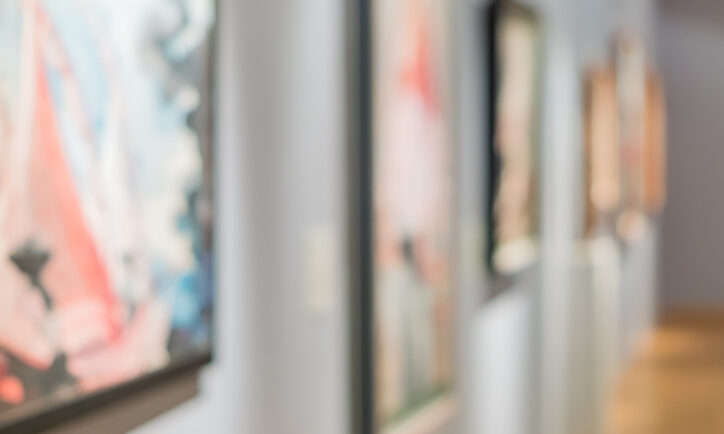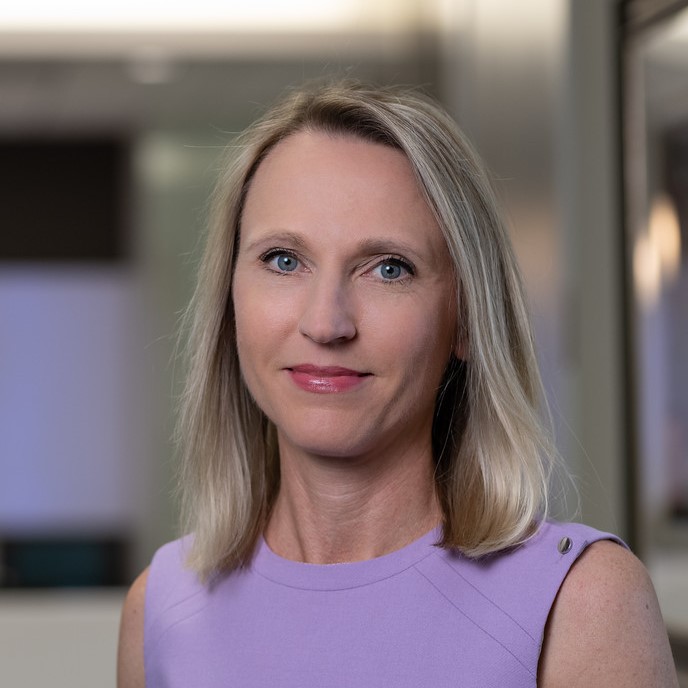This is the first piece within the private market series that will explore the evolution happening within alternatives and the private market investment landscape. Over

10 Rules of Collecting Art
January 11, 2021
Below is a transcript of the video interview.
Elizabeth Cody:
Hi everyone. Welcome to another episode of the Sand Hill Interview Series. In this series, we’re going to be speaking with subject matter experts and thought leaders on all things related to complex wealth situations.
My name is Elizabeth Cody. I am a Senior Wealth Manager here at Sand Hill, and I think today’s subject nicely aligns with our objective to understand our client’s full financial picture. And that’s going to include investments that you make based on your passions and your interests. So that brings us to the subject today, which is an exploration of the 10 Rules of Collecting Art. And today I have with me, Amelia Manderscheid. Hi Amelia.
Amelia:
Hi Liz.
Elizabeth:
Amelia, I’m just going to quickly go through your bio and then we can start a discussion. Sound good?
Amelia:
Perfect.
Elizabeth:
Okay, great. Amelia is the Vice president and Senior Director in Contemporary Art at Bonhams, one of the world’s largest and most renowned auctioneers of fine arts and antiques, motorcars, and jewelry. Amelia is based in San Francisco and represents Bonhams with a focus on developing the West Coast region. She engages with the collecting community and leads strategic development and initiatives for the company. Amelia has extensive experience in the art world and has previously held positions as the General Partner with Exponential Creativity Ventures and as a Specialist and Global Head of eCommerce in the Post-War & Contemporary Art department at Christie’s in New York. She has a MBA and enjoys discussing art as an alternative investment. If you want to know more about Amelia and her background, simply click on the link below and that will bring you right to her bio. Amelia, I’m so excited to be with you today. Thanks for taking time out of your busy day.
Amelia:
I’m thrilled to be here. Thanks, Liz.
Liz:
I thought maybe the best way to kick this off is perhaps if you could share with our audience, why you think art collecting is a worthwhile pursuit for an investor.
Amelia:
I think art collecting is something someone should pursue because they are curious about artworks and would enjoy living with or being surrounded by beautiful or inspiring artworks, first and foremost. I certainly think it can be a great investment vehicle, and I think anything you’re thinking about buying in your life, over a thousand dollars, you probably want to give some care and consideration to, and pretty much all artworks would be in that price point. So I just think you at least want to put a little bit of your investor hat on when you’re considering art purchases, even if you’re buying them because you love them, which is really what probably draws you to them anyway.
Elizabeth:
Okay, great. That’s really helpful. So let’s dive into those 10 rules. I thought it might be helpful to discuss how art collecting relates to other types of investments. As an example, here at Sand Hill, before we introduce a new asset class into a client’s portfolio, we’re going to want to do our due diligence. I imagine, Amelia, there are considerations that you would suggest for someone who wants to pursue art collecting. That brings us to our first question. Can you share with us, what are the key steps to creating an art collection?
Amelia:
Yeah, absolutely. And I would certainly say that you’re going to want to do your same due diligence. You want to research, you want to do your homework when it comes to art you are interested in. But due diligence is always such a… it sounds legalese, right? It just sounds like a lot of 10 K’s or paperwork, and it’s just no fun. My point is the due diligence for buying art is, I think, some of the most interesting part about it. Hopefully, those who are interested in art love doing that type of research. That means going to art museums, going to art galleries or auction houses, both of which galleries and auction houses having the best free art shows in town. Auction houses have previews for all of the things they sell, and those are free, and you get to see prices. Which is great, because you don’t get to see those pretty much anywhere else. I think really you just have to want to research and learn and spend the time to get to know the galleries that represents that artist’s work or get to know the artists themselves, and really do your homework. I think the Gaugin painting I wanted to point to, to illustrate this rule, is a painting that was owned by the Rockefellers. They are a family that we don’t need to say much more about to know who they are, but at the same time, they were a part of founding The Museum of Modern Art, and did extensive research. When there isn’t a pandemic, travel is usually a part of that process, which again is a lot more fun. I think traveling to see art in different places, or to art fairs, or when you are traveling to find ways to see art on business trips as well.
Elizabeth:
Great. Now, I decide I want to move forward and be a serious art collector, but I feel kind of overwhelmed. I don’t know where to begin. You mentioned a few places of where to focus your energy, but maybe you can share some other activities that would serve me well, if I wanted to pursue that.
Amelia:
Absolutely. I think much like any subject you want to learn a lot about, you don’t want to boil the ocean, right? You want to find a few artists in this case, or even, with assets, there’s only so many companies you could follow. When it comes to artwork, pick a few artists you really want to learn about and spend the time to research those artists. I think really getting involved in your collecting community is a great way, like your local museums, to learn about art. The painting I picked here is by a Lebanese born poet and visual artist named Etel Adnan, and her work I actually learned about in Minneapolis at a collector’s home. I had not heard of her. And again, I’m a professional in this industry and I didn’t know about this artist. I learn about great artwork often from visiting collector’s homes. Actually this is a painting of Mount Tamalpais. I was traveling somewhere else to learn about an artist who was working in my backyard.
Elizabeth:
That’s great. And then what about some of the pitfalls that should be avoided?
Amelia:
Well, I think because it is one of the largest unregulated markets, or relatively unregulated markets, I would say financial markets have much more regulation than the art market. There can be certain opportunities for people to take advantage of those that haven’t done their homework or the research and who may be just getting started. So you certainly want to be careful of that. I would certainly try to buy from those who have strong reputations. That reputation is really everything in the art market as a result. I would say, if it sounds like it’s too good to be true (or someone found this Picasso in their attic) it probably isn’t, like most things in life. But unless a prestigious auction house is selling it and they can back it up and show it’s been researched and documented, then that’s a great story, but don’t buy it from the guy on the corner. I would also say don’t buy art on vacation.
And, I get why. You have the time, it’s beautiful, you walk in off the street. I only caution that as in, if you buy it, and you love it, and you we’re talking about investment, right? If you buy it because you love it, I think you should just go for it. But if you’re wanting to put that investment hat on, I would maybe not buy it after a few Mai Tais at the lounge. This image here, and I’m being a little cheeky, is on a beautiful vacation island of Menorca in Spain. It’s an image from a brand new gallery with a global international art business that is launching a gallery on this beautiful vacation Island.
Elizabeth:
Once we at Sand Hill commit to making an investment and putting it in a client’s portfolio, we’re going to monitor its valuation. When somebody buys a piece of art as a collector, not as Liz Cody who just thinks it’s pretty, should they think about it as owning it their entire lifetime, or what would cause a piece to lose value?
Amelia:
Yeah, absolutely. I think art is a relatively illiquid asset. We can get into it later, but there’s costs associated with owning pieces, and all artworks are unique and physical artworks need to be moved, and cared for, and insured, and packed, and hung, and can weigh hundreds of pounds or so. It’s just not the kind of thing you can easily flip tomorrow, typically, right? There certain trends in the art market, meaning that some artists are hotter and then they go through phases and some are not. And I’m certainly happy to go through that too, but one thing that can negatively impact the value of a work is if it is damaged. This Picasso painting (those listening might already know this story) is very famous. Even beyond the art world. Liz knew this story. When the casino magnate put his elbow through this Picasso, he owned it and it was on accident. He actually has a vision issue and didn’t know he was doing that. Of course he did end up selling it later and it got restored.
Elizabeth:
If someone begins to learn how to be a collector and they’re immersing themselves into the art world and they’re going, like you said, to these art gallery openings or working with folks such as yourselves, what sort of approach should they take with these individuals that they encounter?
Amelia:
Absolutely. I would say one of my heartfelt rules for collecting is that you should never be afraid to ask questions and you should never stop asking them. People like me studied art history and have experience in this field. If you’re a new collector, you don’t, and of course you haven’t spent years studying this art and it’s OK to ask those questions. I think there’s a big intimidation factor. You want to find people you can trust and your guides through these uncharted waters, whether is it a friend or again, an experienced collector. This artwork installation here is from a local gallery in San Francisco. Jessica Silverman, she’s showing a lot of younger emerging artists, and I would say a great accessible gallerist to kind of show you the ropes. That’s just one example. You have to find the person that clicks for you or the sources of information that makes sense.
Elizabeth:
Now Amelia, say somebody has listened to everything you’ve told them to do. They’ve done their due diligence. They’ve done their research, they’ve become active in their community, and they are ready to make that first purchase. What is the first step, and is it dependent on the type of art that they’re trying to collect?
Amelia:
Yes, I would say, I think again in kind of developing your focus like we talked about earlier, if you really want to focus on young emerging artists and maybe the artists in your local community, that’s definitely more, I would say, higher on the risk versus reward scenario. It’s really like a venture capital model. You’re going to invest, buy a lot of works that are probably relatively lower price point. Then probably, one day, a couple of them will be worth a lot. Whereas if you’re saying, well, actually I’ve studied these artists I saw in museums, I want to buy, establish blue chip artists, you pretty much know it’s going to hold value, but it’s not necessarily going to be that like moonshot that anything in your portfolio will increase in value exponentially.
So my advice there would really be just to “go big or go home” meaning having one artwork that ends up being worth a lot, is going to open so many more doors for you even to buy further works, as we mentioned, than owning a lot of works worth a little amount of value. I mean, even one day, if you wanted to sell or your estate was selling, an auction house is going to give you such a better deal. Especially, if you have one thing they really want versus a lot of things that they might want. How do you predict that future value? Again, it depends on your collecting strategy. The artwork you see here is a Ruth Asawa sculpture. She was a Bay area, San Francisco-based artist.
She had a number of public sculptures and is very involved in arts education and really didn’t get discovered as a fine artist, even though she’d been working her whole life, until very close towards the end of her life. We sold this sculpture at Bonhams this past summer for $2.2 million, and she at the end of her life basically had to sell work to eat. She wasn’t selling sculpture for $2 million.
Elizabeth:
Okay. That’s very helpful. And then can a collector actually influence the market? Amelia, maybe you can share other factors that contribute to creating value for a specific artist or a specific style.
Amelia:
Yeah, absolutely. This is a great piggyback off what we were just talking about. I think collectors can improve upon the market for the artists that they champion so much more than it is perceived by outsiders. Collectors are really a promoter for the works in their collection and the artists they collect. They should consider themselves a promoter, even if they don’t, and it will certainly improve that artist’s overall market, and by default, your collection. But also, if you collect the work you believe in it, you’ve taken a stance in it. So I think this example here is a painting by Lee Krasner, who was Jackson Pollock’s wife. And actually, there’s a great book that was just written called “Ninth Street Women”, but it’s all about the women of the Abstract Expressionist era.
And basically (the book says this, I’m not saying this) there was no Jackson Paul without Lee Krasner, right. She’s really the one who…he made the work, but she promoted the work. She got it in the right show. She got it in the right museums and the right dealers in the right collections, much to the sacrifice of her own artistic endeavors. Now her work has achieved a lot more recognition. This painting was estimated at $4-6 million this past June, and it was sold for $9 million. It’s just one example again, of how her work is now being looked at. It was sold from a collector named Jenny Williams, who long championed women artists and women of the Abstract Expressionist movement.
Elizabeth:
Okay. That’s very helpful. Say somebody makes that initial purchase and they’ve decided they really do want to be a serious collector. They want to select additional pieces for that collection that will enhance the value over time. What’s the best strategy per se to potentially increase the value of that overall collection?
Amelia:
Absolutely. I would say the best strategy really is to focus. You’re much more likely to make good financial decisions around art over time, if you specialize in an artistic movement or a finite number of artists, so you can really educate yourself and really know their work in depth. I spent a number of years managing Kristi’s relationship with the Andy Warhol estate. You could send me a Warhol right now and I could like tell you what I think it’s worth off the top of my head. I don’t need to research it in a database. You want that kind of level of depth of knowledge and expertise. You want to understand the market and the nuances and what you’re buying. We all know it’s so much easier if you focus that if you try to do that for lots of different disparate artists. Again, your taste may change over time, most collectors do, but still I think makes sense to really focus.
The work here actually is, the image is, Marc Jacobs, the fashion designer, who’s also an art collector and this is a painting by Karen Kilimnik who he bought her work in depth. He really championed this work. He recently completely changed his collecting style and chose to sell a number of works. This sold very well, I think partly because obviously he was a champion for this work, but he’s an example of a collector who buys a few artists in depth. Also, I think people usually choose to sell because of the three D’s in the auction business: divorce, death, or debt. Typically, otherwise, people are mostly just buying, usually not selling. He’s a great example of someone who decided just to have a fresh slate. He’s actually moved to a Frank Lloyd Wright house, which really doesn’t work a lot with a lot of his collection, he said, so I think that’s a great clean slate example too.
Elizabeth:
For someone who’s buying art, you kind of touched on this a little bit before, should they only think about art as an investment? Also, I’m just curious, is there a way to identify a classic versus a short- term trend?
Amelia:
Okay. That second question. That is the big question right now in the art market: What is a classic versus short term trend? Meaning, I think there’s a real re-examination of who the gatekeepers are in art history, and who decides who is important. It was a European centric, primarily male art history. Now even some universities are teaching a much less linear, more inclusive art history.
Here’s a Nigerian artist, a young man, the “Joy and Purple” painting you see here. He does portraiture, you know, BOAFO. This painting had an estimate of $50-70 thousand at auction very recently and sold for over $650,000, partly because there’s so much interest in his work. If you can’t buy one from the gallery, you will go to the auction house. It’s old fashioned supply and demand, right? Access to supply is very limited and demand is very high. Also if you bought one before he was famous and before he had this great gallery representation, before there got to be interest, you might say, well, I want to sell mine cause I would like $650,000 please.
Elizabeth:
Who doesn’t? When it comes to the question “Should you only buy art as an investment?” you and I had talked earlier, and I loved it the way you have your little ratio of what someone should think about when they’re buying a piece of art. And I think you’re absolutely right.
Amelia:
Absolutely, and I think you should really know when to pull the trigger. I think, with art at least, and with most decisions, you should use 85% of your head and 15% of your heart to decide whether or not you should buy it. You should do your research, and understand the market value, but at the end of the day, if you want to buy it, go for it.
Elizabeth:
So now we come to our last question for you today, Amelia. What factors determine the price of a piece of art. One thing you sort of touched upon earlier, which maybe you could share with us at the same time is, I know that sometimes there are costs associated with a purchase such as installation or storage. I think it’s important for the audience to understand you’re not just buying the piece of art. There are other costs that go along with that, that we want them to think about.
Amelia:
Yeah, absolutely. When you are bidding on something at auction, there are additional costs, right? There’s the gavel price that the auctioneer puts down, that we call the hammer price (literally like the gavel you use). Then we have the auction house’s premium, which will be added on top of that. There’s the shipping. There’s generally insurance, generally installation, storage if you need it. Most people find buying art, a very addictive activity. I know everyone freaks out about the idea of all this art today and storage, but many collectors have storage simply because they are rotating their collections and they have more than they can view. One point I would love to make (it’s not in the rules, but it should be) is that you should buy it because you love it and you will figure out a place to put it later. I assure you, you should not buy it because you have this space above your couch and you must put something there. But I understand the practical, I’m a very practical person. I understand the practical implications and we’re talking through all the costs of owning art. Of course I know people who would only buy work if they sold something because they don’t want to put anything in storage. They want to look at everything. So I completely support that philosophy.
Elizabeth:
What is art truly worth?
Amelia:
Well, Liz, I think it’s been proven over time that art is (and it’s my opinion) that art is truly worth whatever someone is willing to pay for it. Certainly it has benchmarks, we do comparable sales. You want to do your research. You want to look at auction database prices. It’s really worth what someone is willing to pay for it at the end of the day. I think that’s why it keeps me extremely excited and enthusiastic and engaged with the art market. Every very artwork is unique in some way, so it keeps me on my toes to say the least.
Artwork prices are divorced from like the cost of the materials to make them. And I think that’s just something you have to be willing to accept, right? It’s a rule of engagement basically. So like the artwork I picked to illustrate this point, the cost of materials is, well, it’s an endless supply of cellophane wrapped candies, which, I mean, I guess I could put a price on that. But it’s nowhere near the price that the museum who purchased this work paid, which is it’s publicly known. I can say it’s Crystal Bridges Museum. The estimate on this was $5-7 million and they paid $7.7 million. I think we’d all agree that cellophane candies are not worth $7.7 million, but I think this is one of my favorite artists. I think his conceptual ideas are probably worth that.
This work was not titled, and the dimensions will vary on the installation, but the ideal weight is to be 50 pounds. And it was 50 pounds because his partner, who was dying of HIV AIDS died at the weight of 50 pounds. So the weight is a commemorative. It’s almost like a memento. It’s a commemoration of his partner. And the artist’s wishes are that they candy are installed, however you want to install them, but people can take them. I have these candies and he did a series of these works dedicated to others as well, he did one for his father. I have these candies in my handbag, and in my matchbook box at home, I just kind of have them everywhere.
When I find one I pick it up and I think about this work and I think about the meaning of it and I put it back and actually I’ve eaten a few of these too. I mean, you can eat them they’re candy.
Elizabeth:
Amelia, before we wrap it up, I just want to say, thank you so much. I wanted to share you with all of our clients, because I always love talking to you and I always walk away a little smarter. Anything else that you wanted to mention before I let you go, that you think our audience should know? I mean, you’ve been wonderful to take all this time.
Amelia:
I think they should hopefully not feel discouraged by all of the weight that can come with collecting, but at the same time realize that all the works that they are buying will outlive them and they will need to make a plan for their collection, like all of their other assets, at the same time. People buy art to live with it and to enjoy it and that at the end of the day, that’s the goal.
Elizabeth:
Great. I can’t thank you enough, Amelia. And if anybody has any questions for Amelia, simply fill out the form below, we will get back to you as soon as we can. Thanks for joining us. Thanks again, Amelia.
Amelia:
Thanks Liz. And thanks to the Sand Hill team for having me. Thank you.
*****
* The artwork depicted in this video was provided by Bonhams International for viewing purposes only and not available for sale.
Disclosure: Sand Hill Global Advisors (“SHGA”) is a registered investment adviser with the Securities and Exchange Commission however, such registration does not imply a certain level of skill or training and no inference to the contrary should be made. SHGA may only transact business in the states where the firm is noticed filed or otherwise exempt. For disclosures, including additional information on credential designations of SHGA representatives please see our Form ADV Part 2A and 2B Disclosure Brochures, which can be obtained by clicking here. SHGA is separately owned and unaffiliated with any other firm or entities mentioned or featured in this video. This video presentation may discuss certain investment products and/or securities and is being provided for informational purposes only, and should not be considered, and is not, investment, financial planning, tax or legal advice; nor is it a recommendation to buy or sell any securities. Investing in securities involves varying degrees of risk, and there can be no assurance that any specific investment will be profitable or suitable for a particular client’s financial situation or risk tolerance. Past performance is not a guarantee of future returns. Individual performance results will vary. The opinions expressed in the video reflect SHGA’s views as of the date of the video. Such views are subject to change at any point without notice. You should not treat any opinion expressed by SHGA as a specific inducement to make a particular investment or follow a particular strategy, but only as an expression of general opinion. Nothing presented herein is or is intended to constitute investment advice, and no investment decision should be made based solely on any information provided on this video. There is a risk of loss from an investment in securities, including the risk of loss of principal. SHGA does not guarantee any specific outcome or profit. Any forward-looking statements or forecasts contained in the video are based on assumptions and actual results may vary from any such statements or forecasts. SHGA encourages you to consult with a professional financial advisor prior to making any investment decision.
Articles and Commentary
Information provided in written articles are for informational purposes only and should not be considered investment advice. There is a risk of loss from investments in securities, including the risk of loss of principal. The information contained herein reflects Sand Hill Global Advisors' (“SHGA”) views as of the date of publication. Such views are subject to change at any time without notice due to changes in market or economic conditions and may not necessarily come to pass. SHGA does not provide tax or legal advice. To the extent that any material herein concerns tax or legal matters, such information is not intended to be solely relied upon nor used for the purpose of making tax and/or legal decisions without first seeking independent advice from a tax and/or legal professional. SHGA has obtained the information provided herein from various third party sources believed to be reliable but such information is not guaranteed. Certain links in this site connect to other websites maintained by third parties over whom SHGA has no control. SHGA makes no representations as to the accuracy or any other aspect of information contained in other Web Sites. Any forward looking statements or forecasts are based on assumptions and actual results are expected to vary from any such statements or forecasts. No reliance should be placed on any such statements or forecasts when making any investment decision. SHGA is not responsible for the consequences of any decisions or actions taken as a result of information provided in this presentation and does not warrant or guarantee the accuracy or completeness of this information. No part of this material may be (i) copied, photocopied, or duplicated in any form, by any means, or (ii) redistributed without the prior written consent of SHGA.
Video Presentations
All video presentations discuss certain investment products and/or securities and are being provided for informational purposes only, and should not be considered, and is not, investment, financial planning, tax or legal advice; nor is it a recommendation to buy or sell any securities. Investing in securities involves varying degrees of risk, and there can be no assurance that any specific investment will be profitable or suitable for a particular client’s financial situation or risk tolerance. Past performance is not a guarantee of future returns. Individual performance results will vary. The opinions expressed in the video reflect Sand Hill Global Advisor’s (“SHGA”) or Brenda Vingiello’s (as applicable) views as of the date of the video. Such views are subject to change at any point without notice. Any comments, opinions, or recommendations made by any host or other guest not affiliated with SHGA in this video do not necessarily reflect the views of SHGA, and non-SHGA persons appearing in this video do not fall under the supervisory purview of SHGA. You should not treat any opinion expressed by SHGA or Ms. Vingiello as a specific inducement to make a particular investment or follow a particular strategy, but only as an expression of general opinion. Nothing presented herein is or is intended to constitute investment advice, and no investment decision should be made based solely on any information provided on this video. There is a risk of loss from an investment in securities, including the risk of loss of principal. Neither SHGA nor Ms. Vingiello guarantees any specific outcome or profit. Any forward-looking statements or forecasts contained in the video are based on assumptions and actual results may vary from any such statements or forecasts. SHGA or one of its employees may have a position in the securities discussed and may purchase or sell such securities from time to time. Some of the information in this video has been obtained from third party sources. While SHGA believes such third-party information is reliable, SHGA does not guarantee its accuracy, timeliness or completeness. SHGA encourages you to consult with a professional financial advisor prior to making any investment decision.









